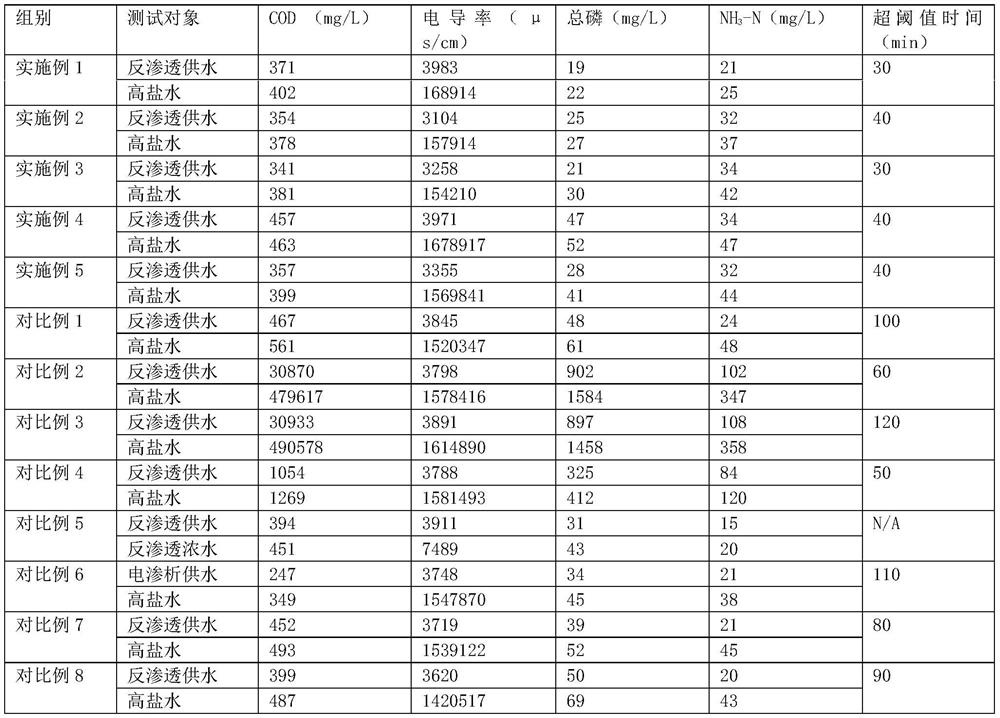Reverse osmosis electrodialysis method for treating saline wastewater
A technology for saline wastewater and reverse osmosis concentrated water, applied in water/sewage treatment, chemical instruments and methods, multi-stage water/sewage treatment, etc. Problems such as rupture, pressure cannot increase indefinitely, etc.
- Summary
- Abstract
- Description
- Claims
- Application Information
AI Technical Summary
Problems solved by technology
Method used
Image
Examples
Embodiment 1
[0037] 1. Characteristics of pesticide wastewater
[0038]This technical solution concentrates and recovers the salt substances of the pesticide wastewater. In this example, the pesticide wastewater is formed after conventional treatment to remove suspended solids. The characteristic parameters of the water quality are as follows: pH 8.0, COD 30933mg / L, conductivity 3891μs / cm, total phosphorus 897mg / L, NH 3 -N 108mg / L. The salt substances in the pesticide wastewater are mainly sodium chloride and sodium sulfate, and the content of the salt substances is 1.9w.t%.
[0039] Among them, COD is the abbreviation of Chemical Oxygen Demand, which refers to chemical oxygen demand, which refers to the amount of oxidant consumed when treating water samples with strong oxidants. It is an index indicating the amount of reducing substances in water. The reducing substances in water mainly refer to organic matter. COD is an indicator to measure the content of organic matter in water, NH ...
Embodiment 2
[0051] This example is basically the same as Example 1, except that the dosage ratio of anti-blocking agent and supernatant is 5mg:1L.
Embodiment 3
[0053] This example is basically the same as Example 1, except that the dosage ratio of anti-blocking agent and supernatant is 10mg:1L.
PUM
 Login to View More
Login to View More Abstract
Description
Claims
Application Information
 Login to View More
Login to View More - R&D
- Intellectual Property
- Life Sciences
- Materials
- Tech Scout
- Unparalleled Data Quality
- Higher Quality Content
- 60% Fewer Hallucinations
Browse by: Latest US Patents, China's latest patents, Technical Efficacy Thesaurus, Application Domain, Technology Topic, Popular Technical Reports.
© 2025 PatSnap. All rights reserved.Legal|Privacy policy|Modern Slavery Act Transparency Statement|Sitemap|About US| Contact US: help@patsnap.com

